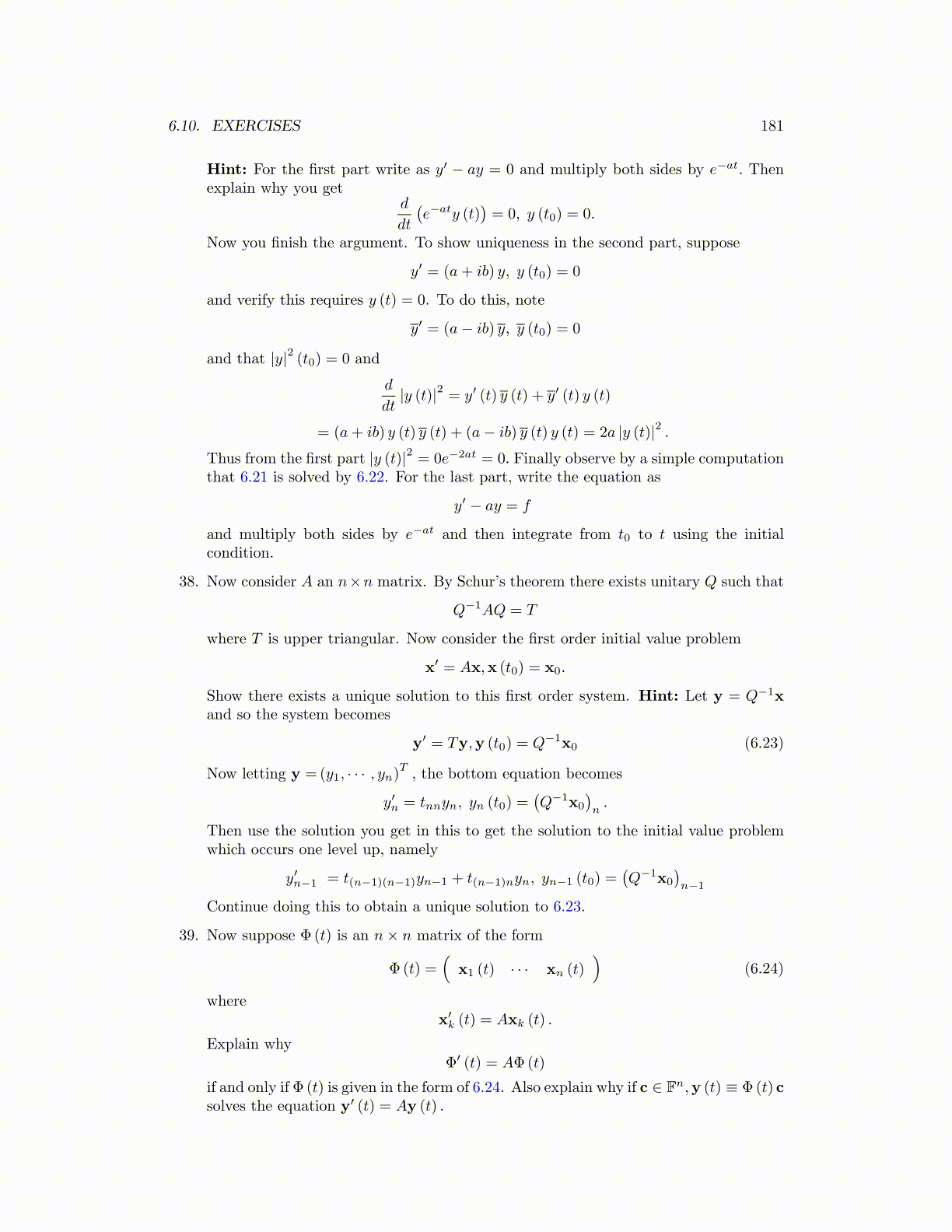
6.10. EXERCISES 181
Hint: For the first part write as y′ − ay = 0 and multiply both sides by e−at. Thenexplain why you get
d
dt
(e−aty (t)
)= 0, y (t0) = 0.
Now you finish the argument. To show uniqueness in the second part, suppose
y′ = (a+ ib) y, y (t0) = 0
and verify this requires y (t) = 0. To do this, note
y′ = (a− ib) y, y (t0) = 0
and that |y|2 (t0) = 0 and
d
dt|y (t)|2 = y′ (t) y (t) + y′ (t) y (t)
= (a+ ib) y (t) y (t) + (a− ib) y (t) y (t) = 2a |y (t)|2 .Thus from the first part |y (t)|2 = 0e−2at = 0. Finally observe by a simple computationthat 6.21 is solved by 6.22. For the last part, write the equation as
y′ − ay = f
and multiply both sides by e−at and then integrate from t0 to t using the initialcondition.
38. Now consider A an n×n matrix. By Schur’s theorem there exists unitary Q such that
Q−1AQ = T
where T is upper triangular. Now consider the first order initial value problem
x′ = Ax,x (t0) = x0.
Show there exists a unique solution to this first order system. Hint: Let y = Q−1xand so the system becomes
y′ = Ty,y (t0) = Q−1x0 (6.23)
Now letting y =(y1, · · · , yn)T , the bottom equation becomes
y′n = tnnyn, yn (t0) =(Q−1x0
)n.
Then use the solution you get in this to get the solution to the initial value problemwhich occurs one level up, namely
y′n−1 = t(n−1)(n−1)yn−1 + t(n−1)nyn, yn−1 (t0) =(Q−1x0
)n−1
Continue doing this to obtain a unique solution to 6.23.
39. Now suppose Φ (t) is an n× n matrix of the form
Φ (t) =(
x1 (t) · · · xn (t))
(6.24)
wherex′k (t) = Axk (t) .
Explain whyΦ′ (t) = AΦ (t)
if and only if Φ (t) is given in the form of 6.24. Also explain why if c ∈ Fn,y (t) ≡ Φ (t) csolves the equation y′ (t) = Ay (t) .